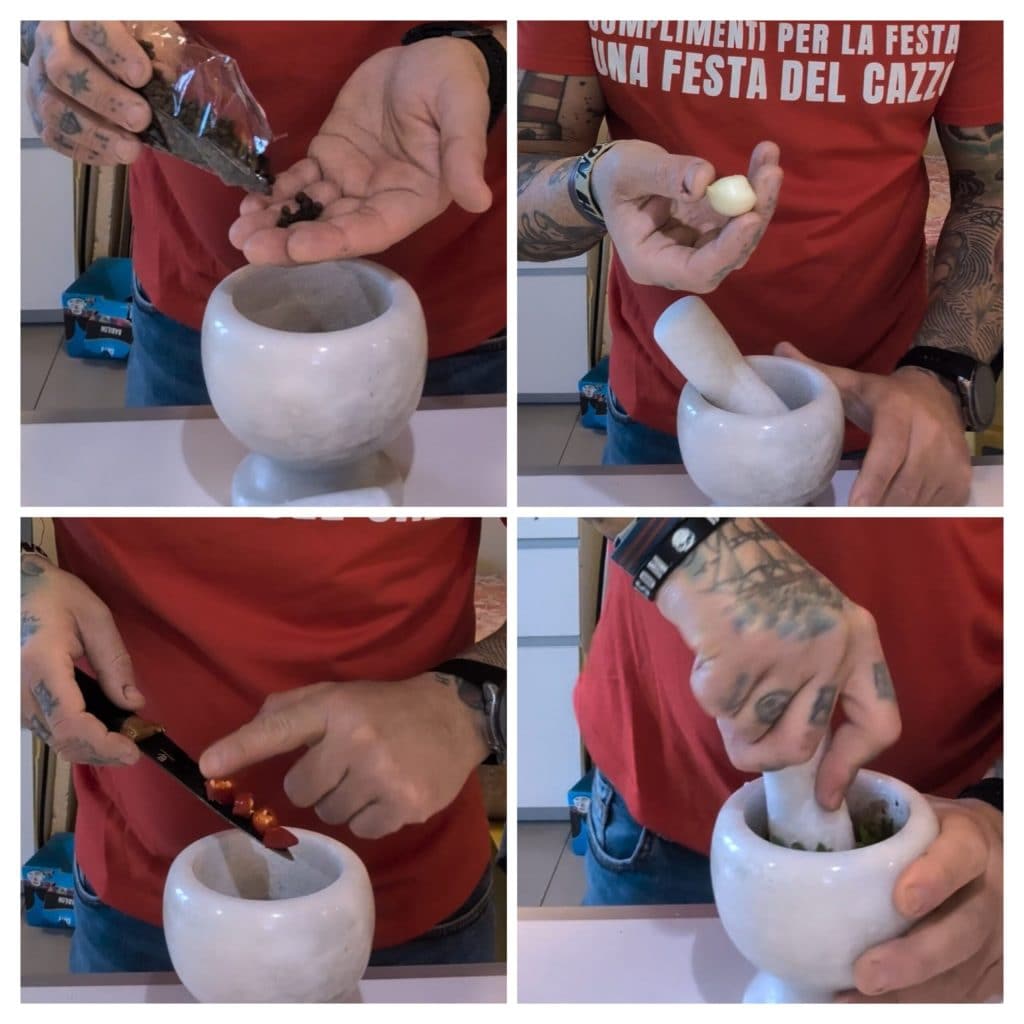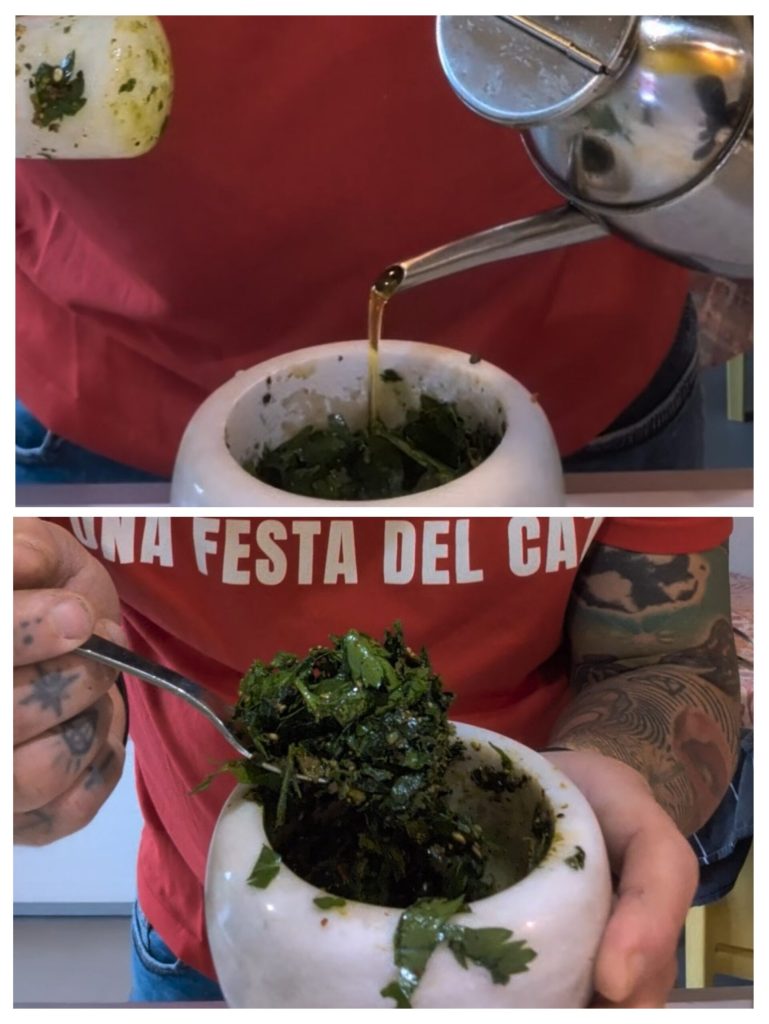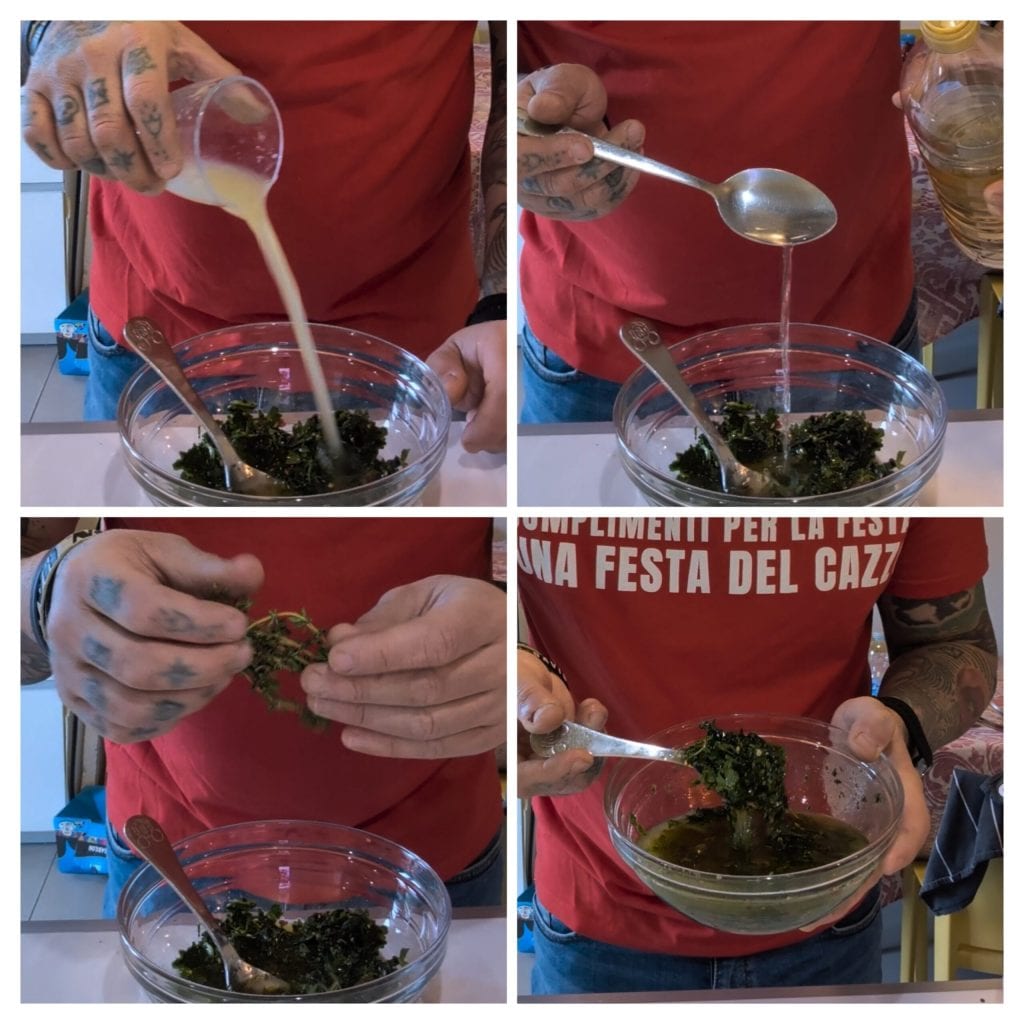A journey of flavors from Argentina: chimichurri sauce.
Imagine a fresh and aromatic seasoning that enhances grilled meat, brings a lively touch to vegetables, and adds a bit of spiciness to any dish. Here is chimichurri sauce, an authentic Argentine delight that captivates the palate with its simplicity and explosive taste. This versatile sauce originates from a harmonious blend of aromatic herbs, garlic, a spicy touch, and a dash of extra virgin olive oil. Its origin dates back to Argentine gauchos, who used it to accompany their outdoor barbecues. Today, chimichurri has conquered the entire world, becoming an essential condiment for lovers of Argentine cuisine and authentic flavors. Making chimichurri sauce is a simple and quick process, requiring only a few fresh and high-quality ingredients. In this recipe, we will guide you step by step in creating this magical sauce, revealing the secrets to achieving a perfect result that will impress your guests. Whether you are an expert cook or a beginner, chimichurri is a challenge worth taking on. With this recipe, you will learn to create a unique and customizable condiment, perfect for accompanying a wide range of dishes and adding a touch of Argentina to your culinary creations.

- Difficulty: Easy
- Cost: Very economical
- Rest time: 2 Hours
- Preparation time: 15 Minutes
- Portions: 4
- Cooking methods: No cooking
- Cuisine: Argentine
- Seasonality: Spring, Summer and Fall, All seasons
- Energy 240.47 (Kcal)
- Carbohydrates 0.26 (g) of which sugars 0.06 (g)
- Proteins 0.07 (g)
- Fat 27.90 (g) of which saturated 3.99 (g)of which unsaturated 0.01 (g)
- Fibers 0.11 (g)
- Sodium 193.71 (mg)
Indicative values for a portion of 61 g processed in an automated way starting from the nutritional information available on the CREA* and FoodData Central** databases. It is not food and / or nutritional advice.
* CREATES Food and Nutrition Research Center: https://www.crea.gov.it/alimenti-e-nutrizione https://www.alimentinutrizione.it ** U.S. Department of Agriculture, Agricultural Research Service. FoodData Central, 2019. https://fdc.nal.usda.gov
Ingredients
- 1 bunch parsley
- 1 clove garlic
- 1 chili pepper (Sweet or spicy)
- 1 sprig thyme
- Half lemon (Squeezed)
- 3 tablespoons vinegar
- 0.5 cup extra virgin olive oil
- 0.07 oz fine salt
Tools
- 1 Mortar
- 1 Bowl
Steps
To make chimichurri sauce, I used a mortar to grind the black pepper, garlic, chili pepper, and parsley. I preferred a rustic texture, leaving the pieces slightly larger. If you love a stronger taste, you can also leave some parsley leaves whole.

To ease the work, I added a dash of extra virgin olive oil in the mortar. This not only helps grind the ingredients better but also emulsifies the mixture, blending the parsley with the spices. Continue grinding with the pestle until you obtain a homogeneous mixture, where the parsley is well integrated with the other spices.

After grinding the spices in the mortar, I transfer the mixture to a bowl. I add the lemon juice, vinegar, thyme, and salt. Mix well with a spoon until you get a homogeneous emulsion, where all the ingredients are well blended. Taste the sauce to adjust the amount of salt and vinegar according to your preferences.

Finally, we cover the surface of the sauce with a dash of extra virgin olive oil. Let the sauce rest in the refrigerator for at least 2 hours before serving. This resting period will allow the flavors to meld and intensify. For optimal results, cover the bowl with plastic wrap to avoid oxidation. Remove the wrap about 30 minutes before serving, allowing the sauce to return to room temperature.

And there you have it, your chimichurri sauce, original Argentine recipe, is ready to enhance your dishes! Pair it with grilled vegetables, barbecued meats, or baked fish for an explosion of authentic flavors.
Enjoy your meal from DadCook!

Chimichurri Sauce Storage:
Homemade chimichurri sauce is delicious but fresh! Here are some tips for preserving it at its best: Transfer the sauce into an airtight glass or food-grade plastic container. Avoid metal containers that may alter the flavor. Always cover the sauce with a dash of extra virgin olive oil. This creates a barrier that helps prevent oxidation and preserves freshness. Keep your chimichurri sauce in the refrigerator. Cold temperatures slow bacterial growth and maintain flavor. Homemade chimichurri sauce will last in the fridge for up to 3-4 days.
If you want to keep it longer, you can freeze it. Transfer the sauce to a freezer-safe airtight container and leave space for expansion. Frozen chimichurri sauce can last up to 3 months. Thaw it in the refrigerator before use.
FAQ (Questions and Answers)
Do I have to use a mortar to grind the spices?
No, it’s not mandatory to use a mortar to grind the spices for chimichurri sauce. There are several alternatives that can be just as effective and even more practical:
Immersion blender: An immersion blender is a great option for quickly and evenly grinding the spices. Just place the spices in the blender cup and blend until you have a uniform mixture.
Electric chopper: An electric chopper is another useful tool for grinding spices. Simply add the spices to the chopper’s bowl and grind until you get a homogeneous mixture.
Sharp knife: If you don’t have other tools, you can chop the spices manually with a sharp knife. However, this method requires a bit more time and effort and may not result in as uniform a mixture as the others. Regardless of the method chosen, it’s important to finely chop the spices for maximum flavor in your chimichurri sauce.

